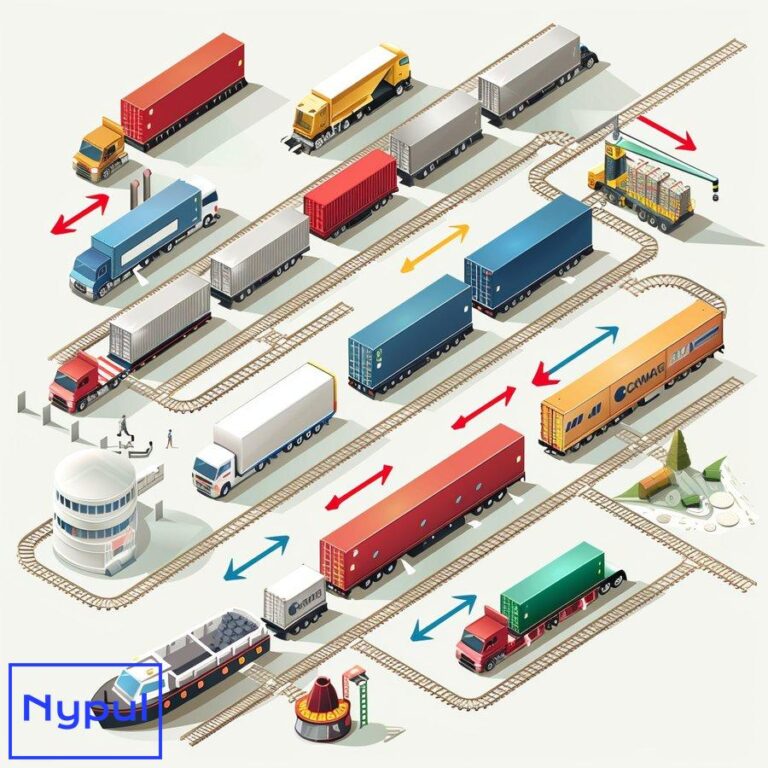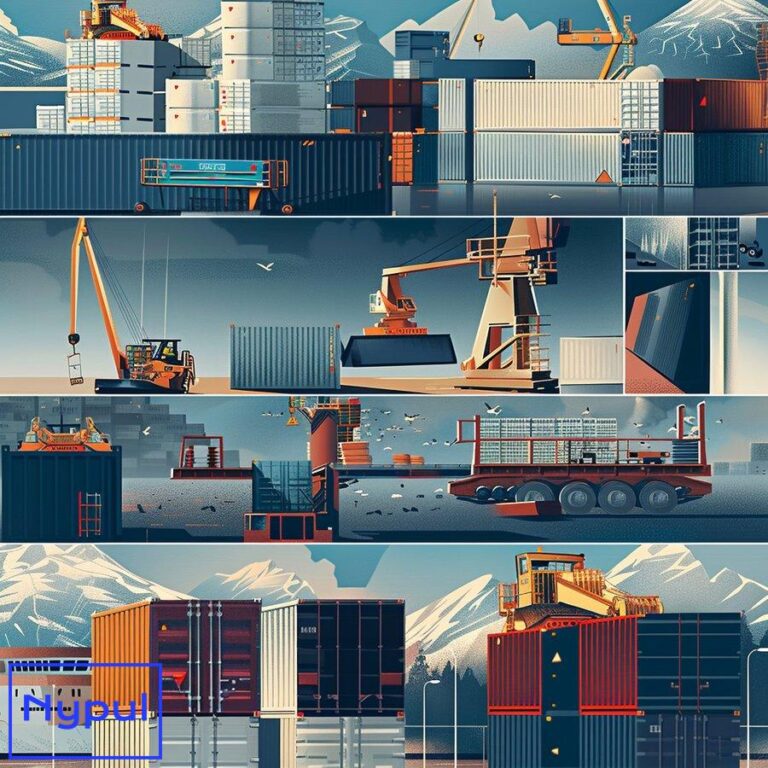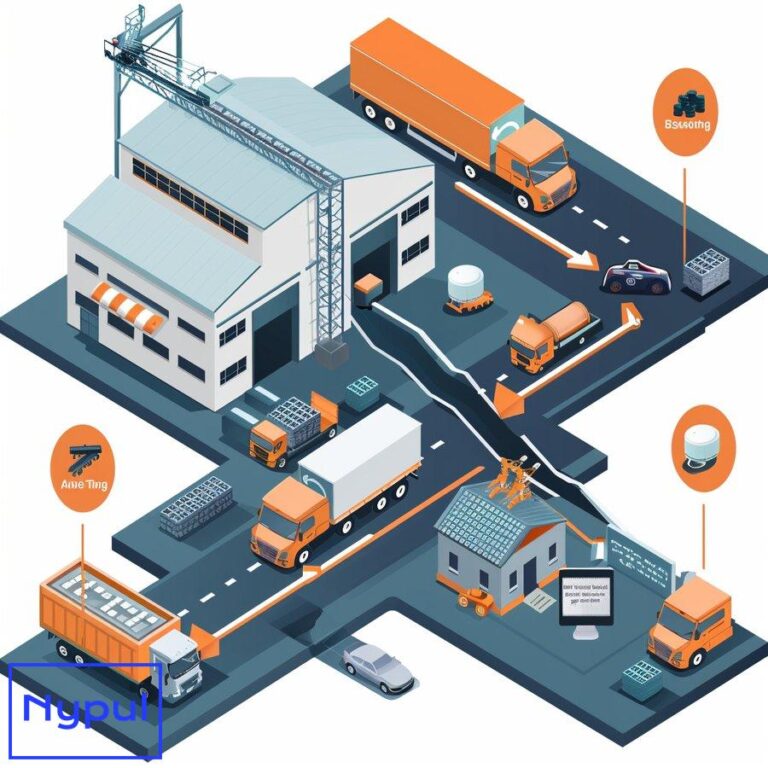What Is Drayage vs Intermodal
What is drayage and how does it differ from intermodal transport?
Drayage refers to the short-distance transportation of goods, typically involving the movement of containers from ports to nearby distribution centers or rail yards. This service is essential in the logistics industry, as it acts as a bridge between long-haul transportation and local delivery. Drayage is characterized by its focus on short hauls, often within a 50-mile radius, and is vital for the seamless transfer of goods from one mode of transport to another.
Intermodal transport, on the other hand, involves the use of multiple modes of transportation to move goods from origin to destination. This method can include a combination of trucks, trains, ships, and even airplanes. The defining feature of intermodal transport is the use of standardized containers that can be easily transferred between different modes of transport without unloading the cargo. This system enhances efficiency and reduces handling costs.

Differences between Drayage and Intermodal Transport
| Aspect | Drayage | Intermodal Transport |
|---|---|---|
| Definition | Short-distance transport of containers | Use of multiple transport modes for shipping |
| Distance | Typically within 50 miles | Can cover long distances across regions |
| Modes of Transport | Primarily trucks | Trucks, trains, ships, and planes |
| Container Handling | Often involves loading/unloading at ports | Containers are transferred without unloading |
| Role in Supply Chain | Connects ports to local destinations | Facilitates long-distance shipping |
Understanding the distinctions between drayage and intermodal transport is essential for businesses seeking to optimize their logistics operations. Each method serves specific needs within the supply chain, making it important to choose the right approach based on the unique requirements of the shipment.
How does drayage contribute to supply chain efficiency?


Drayage plays a pivotal role in enhancing supply chain efficiency by providing timely and reliable transportation solutions. Its impact can be observed in several key areas:
Quick Turnaround Times
Drayage services are designed for speed, allowing goods to move quickly from ports to distribution centers. This rapid transfer minimizes delays in the supply chain, ensuring that products reach their destinations promptly.
Flexibility in Transportation
Drayage offers flexibility in logistics operations. Businesses can adjust their transportation strategies based on demand fluctuations, seasonal variations, or changes in supply chain dynamics. This adaptability is crucial for maintaining efficiency.
Reduced Inventory Holding Costs
By facilitating faster movement of goods, drayage helps businesses reduce inventory holding costs. With quicker access to products, companies can maintain leaner inventories, leading to lower storage costs and improved cash flow.
Improved Coordination with Other Modes
Drayage serves as a critical link between ocean freight and other transportation modes, such as rail. This coordination ensures that shipments are seamlessly transferred, reducing the risk of delays and enhancing overall supply chain performance.
Enhanced Visibility and Tracking
Modern drayage services often incorporate advanced technology for tracking and visibility. This transparency allows businesses to monitor shipments in real-time, improving decision-making and enabling proactive responses to potential issues.
The cumulative effect of these factors makes drayage an indispensable component of an efficient supply chain, driving improvements in speed, flexibility, and cost-effectiveness.
What are the key components of intermodal transportation?
Intermodal transportation is a complex system that relies on various components working together to ensure the smooth movement of goods. Understanding these components is essential for businesses looking to leverage intermodal solutions effectively.
Modes of Transportation
Intermodal transportation utilizes several modes, including:
-
Trucks: Essential for last-mile delivery and connecting other transport modes.
-
Trains: Ideal for long-distance transport, offering cost efficiency for bulk shipments.
-
Ships: Used for international shipping, transporting goods across oceans.
-
Airplanes: Provides expedited shipping for time-sensitive cargo.
Standardized Containers
The use of standardized containers is a hallmark of intermodal transport. These containers can be easily transferred between different modes without the need to unload the cargo. This standardization simplifies logistics processes and reduces handling costs.
Intermodal Terminals
Intermodal terminals serve as transfer points where cargo is moved between different modes of transport. These facilities are equipped with the necessary infrastructure to handle loading and unloading operations efficiently.
Technology and Tracking Systems
Modern intermodal transportation relies heavily on technology for tracking shipments and managing logistics operations. Advanced tracking systems enable businesses to monitor the status of their shipments in real-time, enhancing visibility and coordination.
Regulatory Compliance
Navigating the regulatory landscape is a critical component of intermodal transportation. Businesses must ensure compliance with various regulations governing different modes of transport, including safety standards and customs requirements.
Each of these components plays a vital role in the overall effectiveness of intermodal transportation, contributing to its ability to meet the diverse needs of businesses in today’s global marketplace.
When should businesses choose drayage over intermodal shipping?
Choosing between drayage and intermodal shipping involves evaluating specific business needs and shipment characteristics. Several factors can guide this decision-making process.

Shipment Distance
Drayage is most suitable for short-distance transportation. If the shipment involves moving goods within a limited radius, such as from a port to a nearby warehouse, drayage is the preferred option. For longer distances, intermodal shipping may be more appropriate.

Urgency of Delivery
When time is of the essence, drayage can provide faster turnaround times due to its focus on short hauls. Businesses requiring immediate delivery should consider drayage services to minimize delays.
Type of Cargo
The nature of the cargo can also influence the choice between drayage and intermodal shipping. For example, perishable goods may necessitate quicker transportation, making drayage a better fit. In contrast, bulk shipments may benefit from the cost-effectiveness of intermodal transport.
Cost Considerations
Cost is a significant factor in logistics decisions. Drayage may be more economical for short distances, while intermodal shipping can offer savings for long-haul shipments. Businesses should conduct a thorough cost analysis to determine the most cost-effective option.
Infrastructure Availability
The availability of infrastructure, such as intermodal terminals and drayage services, can also impact the decision. Businesses should assess the local logistics landscape to determine which option is more feasible based on existing resources.
By carefully evaluating these factors, businesses can make informed decisions about when to choose drayage over intermodal shipping, optimizing their logistics operations for efficiency and cost-effectiveness.
How do cost considerations vary between drayage and intermodal transport?

Understanding the cost dynamics of drayage and intermodal transport is essential for businesses aiming to optimize their logistics budgets. The costs associated with each method can vary significantly based on several factors.
Drayage Costs
Drayage costs typically include:
-
Transportation Fees: Charges for moving containers from ports to local destinations.
-
Terminal Handling Fees: Costs associated with loading and unloading containers at terminals.
-
Fuel Surcharges: Additional fees based on fuel price fluctuations.
-
Waiting Time Fees: Charges incurred if the truck is delayed at the terminal.
Drayage costs can be relatively high for short distances due to the concentration of services and the need for quick turnaround times. However, the speed and efficiency of drayage can offset these costs by reducing inventory holding expenses.
Intermodal Transport Costs
Intermodal transport costs encompass a broader range of expenses, including:
-
Long-Distance Transportation Fees: Charges for moving goods over long distances using trains or ships.
-
Intermodal Terminal Fees: Costs for transferring containers between different modes of transport.
-
Handling Fees: Charges for loading and unloading containers at various points.
-
Customs and Regulatory Fees: Expenses related to compliance with international shipping regulations.
Intermodal transport often offers cost savings for long-haul shipments due to the efficiency of rail and shipping modes. However, businesses must consider additional handling and terminal fees, which can add to the overall cost.
Comparative Cost Analysis
| Cost Factor | Drayage | Intermodal Transport |
|---|---|---|
| Transportation Fees | Higher for short distances | Lower for long distances |
| Terminal Handling Fees | Applicable at ports and local terminals | Applicable at intermodal terminals |
| Fuel Surcharges | Variable based on local fuel prices | Variable based on long-haul fuel prices |
| Waiting Time Fees | Common due to terminal delays | Less common, but can occur at terminals |
Conducting a thorough cost analysis is essential for businesses to determine the most economical option for their specific shipping needs. By understanding the nuances of both drayage and intermodal transport costs, companies can make informed decisions that align with their logistics strategies.
What challenges do companies face when implementing drayage or intermodal solutions?
Implementing drayage or intermodal solutions presents various challenges that companies must navigate to ensure successful logistics operations. Recognizing these challenges is crucial for developing effective strategies.
Drayage Challenges
-
Traffic Congestion: Urban areas often experience traffic congestion, leading to delays in drayage operations. Companies must account for potential delays when planning shipments.
-
Regulatory Compliance: Navigating local regulations and compliance requirements can be complex, particularly in different jurisdictions. Companies must stay informed about regulations to avoid penalties.
-
Capacity Constraints: Fluctuations in demand can lead to capacity constraints, making it challenging to secure drayage services during peak periods.
Intermodal Challenges
-
Coordination Between Modes: Effective coordination between different modes of transport is essential for successful intermodal shipping. Misalignment can lead to delays and increased costs.
-
Handling and Transfer Risks: The transfer of containers between modes can introduce risks, such as damage to cargo or delays in loading and unloading.
-
Infrastructure Limitations: Limited infrastructure, such as inadequate intermodal terminals or insufficient rail connections, can hinder the efficiency of intermodal transport.
Strategies for Overcoming Challenges
To address these challenges, companies can implement several strategies:
-
Invest in Technology: Utilizing advanced tracking and logistics management systems can enhance visibility and coordination, reducing the impact of delays and inefficiencies.
-
Establish Strong Partnerships: Building relationships with reliable drayage and intermodal providers can improve service quality and responsiveness.
-
Conduct Thorough Planning: Careful planning and forecasting can help companies anticipate demand fluctuations and secure necessary resources in advance.
By proactively addressing these challenges, companies can enhance the effectiveness of their drayage and intermodal solutions, ultimately improving their overall logistics performance.
How do drayage and intermodal transport work together in modern logistics?

Drayage and intermodal transport are not mutually exclusive; rather, they complement each other in modern logistics. Understanding how these two methods work together is essential for optimizing supply chain operations.

Seamless Transfers
Drayage serves as the crucial link between ocean freight and intermodal transport. When goods arrive at a port, drayage trucks transport containers to intermodal terminals, where they can be transferred to trains or other modes of transport. This seamless transfer minimizes delays and enhances overall efficiency.
Enhanced Supply Chain Visibility
The integration of drayage and intermodal transport allows for improved visibility throughout the supply chain. Businesses can track shipments in real-time, enabling better decision-making and proactive responses to potential issues.
Cost-Effective Solutions
Combining drayage with intermodal transport can lead to cost savings. Drayage provides quick access to local destinations, while intermodal transport offers economical long-haul shipping options. By leveraging both methods, companies can optimize their logistics budgets.
Flexibility and Scalability
The collaboration between drayage and intermodal transport provides businesses with the flexibility to adapt to changing market conditions. Companies can scale their operations based on demand fluctuations, ensuring they can meet customer needs effectively.
Sustainability Benefits
Integrating drayage with intermodal transport can also contribute to sustainability efforts. By utilizing trains and ships for long-haul transport, businesses can reduce their carbon footprint compared to relying solely on trucks for all transportation needs.
In conclusion, drayage and intermodal transport are integral components of modern logistics, working together to enhance efficiency, visibility, and cost-effectiveness. By understanding their interplay, businesses can develop comprehensive logistics strategies that drive success in a competitive marketplace.






